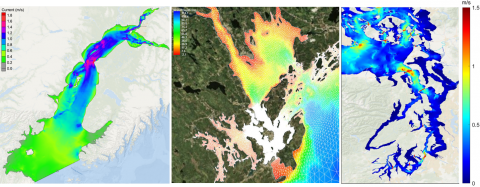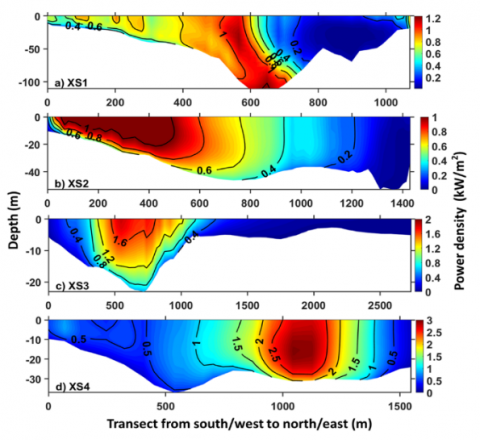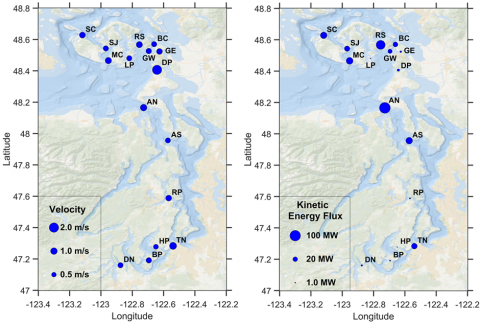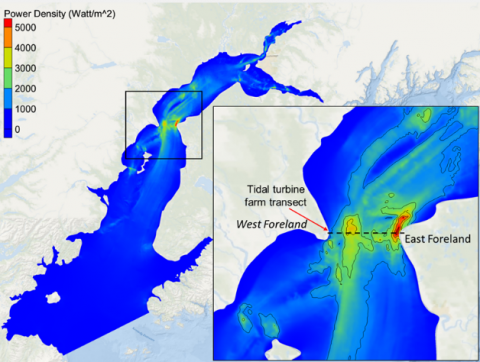Tidal Energy
There has been a growing interest in harnessing energy directly from tidal streams with marine-hydrokinetic (MHK) devices over recent decades. Tidal energy is highly predictable in time and space compared to other renewable energy sources. It thus can potentially serve as a dependable, clean energy resource for coastal regions with an energetic tidal regime, such as the Alaskan coast. Researchers from the Ocean Dynamics Modeling group have developed state-of-the-art models to characterize tidal energy resources and simulate energy extraction by tidal turbine arrays. We have developed high-resolution coastal ocean models for the top-ranked tidal energy sites in the United States to understand tidal hydrodynamics, characterize tidal energy resources, and assess potential environmental impacts associated with tidal energy extraction. Results from these studies can be used to guide optimal siting of tidal turbine farms, improve methodologies for resource estimates, and support International Electrotechnical Commission standards development.

Projects
Modeling Assessment of Tidal Energy Extraction in the Western Passage, Maine, United States–This research focused on a tidal energy resource assessment of the Western Passage in Maine using a 3-D tidal hydrodynamic model. Energy fluxes and power densities along selected cross sections were calculated to evaluate the feasibility of tidal energy development. Different criteria and methods recommended by IEC for resource characterization were evaluated and discussed with a sensitivity analysis of energy extraction from a hypothetical tidal turbine farm in the Western Passage.

Characterization of Tidal Energy Resource in the Salish Sea Using a High-Resolution Tidal Hydrodynamic Model–The Salish Sea represents a great tidal stream resource because of its strong tidal currents in many tidal channels. A three-dimensional, high-resolution tidal hydrodynamic model was developed for tidal energy resource characterization in the Salish Sea. The model was extensively validated with water levels from 10 tide gauges and velocity data from 132 ADCP stations surveyed by NOAA. The top 16 tidal energy hotspots were identified and ranked, and the tidal energy resource at hotspots was characterized by the kinetic energy flux and annual available power.

Development of a Tidal Hydrodynamic Model for Cook Inlet, Alaska, to Support Tidal Energy Resource Characterization–Cook Inlet in Alaska has been identified as the top tidal energy site in the United States. A high-resolution tidal hydrodynamic model was developed and validated to support resource assessment in Cook Inlet, and the model output was used to identify hotspots. A sensitivity analysis was conducted for a hypothetical turbine farm at the Forelands cross section to evaluate tidal energy extraction and the resulting changes in far-field hydrodynamics, such as the tidal regime in the upper inlet.

This work was funded by the Department of Energy Water Power Technologies Office.